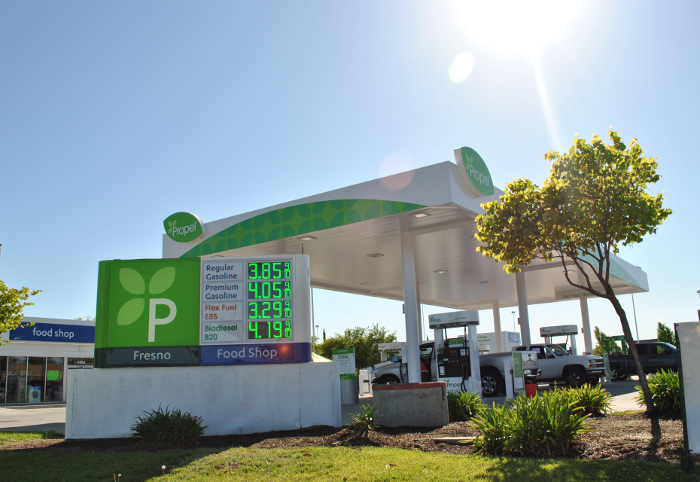Fresno is often an afterthought when it comes to meeting “big city” expectations. Our only form of public transport across the city is via FAX (Fresno Area Xport; mostly buses), but it sure is better than cities or tiny towns that lack public transport entirely. We have our own airport, albeit it’s small and some people still opt to drive a long distance to the major airports. But as “rural” as the Central Valley is, Fresno sure has many EV owners and decent EV infrastructure, with many shopping centers and even some apartment complexes offering chargers.
Electrifiy America has brought 8 solar EV charging stations in Fresno, of which I’ve barely noticed recently. They are level 2 chargers (there are 3 levels of charging speed, with lvl 2 being in the middle) that are operated by solar panels and independent of the grid and can operate at night as the solar energy is stored in batteries. Then there’s alternative fuels, for those of us still operating cars utilizing an Internal Combustion Energy (ICE), be it a traditional gas car or a much more fuel efficient hybrid. Natural Gas (CNG) is a cleaner burning fuel, and probably the most adopted alternative fuel, considering that many school buses and public buses use it.
Diesel HPR (100% renewable diesel produced from recycled fats and oils) outperforms fossil fuel diesel and is the successor to biodiesel. Finally, there’s hydrogen, which is probably the least used alternative fuel, being mostly (if not only) available in select parts of California, with the only hydrogen station in the valley being at the Harris Ranch in Coalinga. Hydrogen is the least popular for a reason: there simply has been no pressure to adopt it, at least until a decade or so. Hydrogen produces no emissions, and is commonly used in EVs (hydrogen fuel cells; with hydrogen directly producing electricity).


